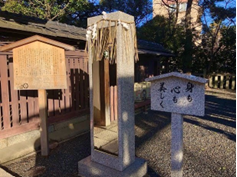Mirror and God
Yoshie Doi
 Wakamiya Hachimangu Shrine in Gojozaka, Kyoto |
 Mirror in front of the main hall |
 Fire festival on December 4, 2022, The 4th Okudo-san Summit will be held on the same day |
On May 7, 2023, the Sweet flag Festival at Wakamiya Hachimangu Shrine will be held for the first time in a long time due to the corona crisis. Wakamiya Hachimangu Shrine on Gojozaka in Kyoto is famous as a pottery shrine, but it is also gaining popularity as a beauty shrine.
There is a large mirror in front of the main shrine. It is an important point of view that we can only see our face and figure through a mirror.
Recently, I think that the amount of information that present people can obtain in a day is said to be equivalent to a year’s worth of information during the Edo period and a lifetime’s worth of information during the Heian period. It is said that there is a hundred times more information in Tokyo than in Kyoto. Currently, it is called information warfare, and it is said to be the most valuable, but I tried to think about what happens when this information is reflected in a mirror. It’s important to be able to discern all the information you come in contact with, but I think the most important thing is to actually see it with our own eyes, feel it with our own skin, know the atmosphere, and experience it. The most important thing in this is to look at myself.
I heard from the chief priest, “If you remove the “ga (wa)” from the mirror (ka ga mi), it becomes “god (kami).” Look at myself, reexamine my inner self, reflect in a mirror, and stand in front of God to purify evil things.
You can only see your own face through a mirror. Mirrors, which were introduced from mainland China in the early Yayoi period, were a surprise to the Japanese at the time. You must have felt a mysterious power in the mirror that reflects the light and reflects the figure. The well where Ono no Komachi reflected her face in the water every morning still exists in Kyoto.
Since ancient times, mirrors have been thought to ward off evil for some reason, and have been treated as expensive and important items as burial goods and tributes. Excavated items show that mirrors were also used in rituals in the 4th century, and imitations made of stone and clay have also been unearthed.
Looking at the mirrors worn by haniwa shrine maidens excavated from ancient tombs, we can see that mirrors were used in rituals. In ancient times, people buried mirrors in the ground as shizumemono (shizumemono) or altar fittings in order to appease local gods and ward off evil spirits. Even in present times, it is said that imitations of mirrors are sometimes buried as part of the ground-breaking ceremony.
In the Kojiki, it is written that Amaterasu Omikami left a teaching that the mirror is like an incarnation of herself and should be taken care of. It is said that the word kagami is a accented corruption of kagemi or yomi, but when society is in turmoil, is it true that a person who has a mirror of the heart and shines on herself is a true beauty.
The end of document
